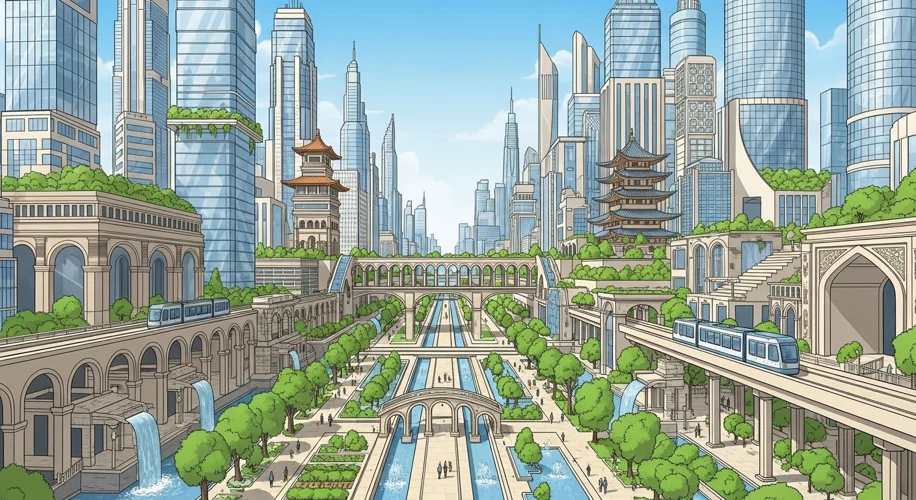Hey everyone! Anya here.
Today, I want to chat about something a little different, but something that really sparks my artistic curiosity: old cities and what they can teach us about building better places to live, right now. As an artist, I’m always looking at how things are designed, how they feel, and how they function. And honestly, some of the oldest cities out there are masterclasses in all of these things.
Think about places like Rome, Kyoto, or even older settlements. They weren’t built with spreadsheets and zoning laws in the way we have them today. They grew organically, shaped by human needs, local materials, and a deep understanding of their environment. And that’s where the lessons lie.
Walkability is Key
One of the first things I noticed when visiting historic city centers is how walkable they are. Streets are often narrow, designed for people, not just cars. This encourages exploration, chance encounters, and a slower pace of life. We’re seeing a resurgence of this idea in modern urban planning, with more pedestrian zones and mixed-use developments. It’s not just about saving space; it’s about fostering community and a more human-scale experience. Imagine a city where you can easily walk to a cafe, a shop, and a park – it feels more connected, doesn’t it?
Resilience Through Simplicity
Many ancient cities were built with materials readily available in their local area. This not only reduced their environmental footprint but also made them incredibly resilient. If something broke, it could often be repaired with local resources. This contrasts with our modern reliance on complex, often imported, materials. There’s a quiet wisdom in using what’s around you, building in a way that can adapt and last.
The Importance of Public Spaces
From the agora in ancient Greece to the piazzas in Italy, public squares have always been vital. These weren’t just empty spaces; they were the heart of the community, places for markets, gatherings, and simply watching the world go by. They were designed to be inviting and functional for everyone. This idea of well-designed, accessible public spaces is something many modern cities are striving for. They create a sense of belonging and offer a shared identity.
Adapting to Nature, Not Fighting It
Ancient builders often worked with the natural landscape. They considered wind patterns, sunlight, and water sources when designing their cities. Think about how some traditional homes are built to stay cool in hot climates without air conditioning. This respect for nature, rather than trying to conquer it, offers a powerful model for sustainable urban development today. How can we build cities that breathe with the environment?
It’s fascinating to think that solutions to some of our modern urban challenges might be found by looking back at how our ancestors lived and built. It’s about creating places that feel good, function well, and connect us to each other and to the natural world. It’s a blend of art, history, and practical living that I find incredibly inspiring.
What are your thoughts? Have you ever visited a city that felt like it had this ancient, human-centric magic?
Catch you in the next post!
– Anya

